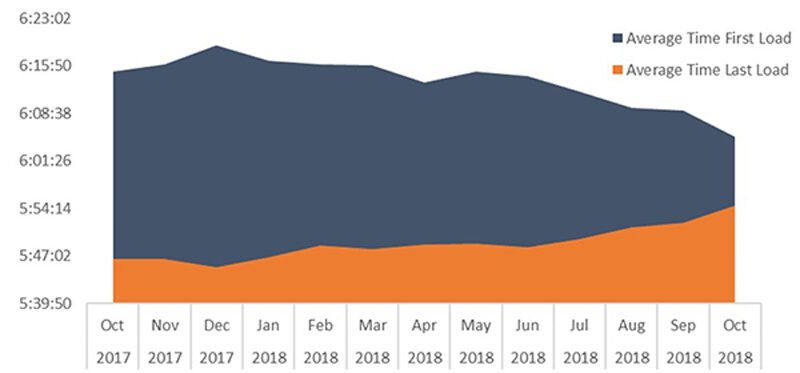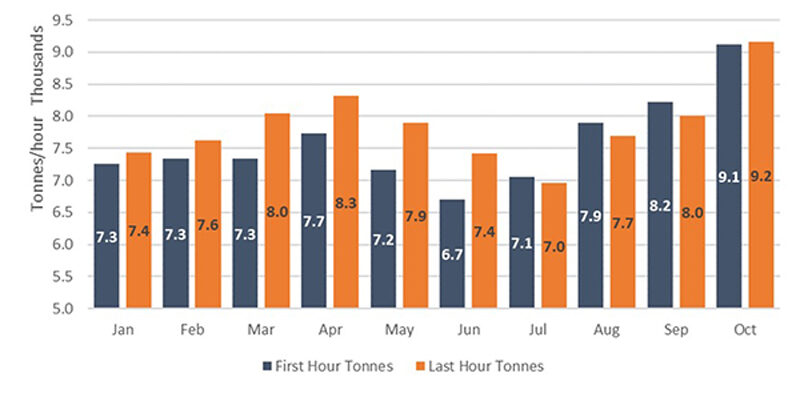Improving Shift-Change at Open Pit Mines
Does your daily production profile look like this? With highly productive hours during the shift bookended by dismal production during shift-change?
We commonly encounter this issue in our comprehensive assessment and opportunity identification programs at our client sites- production during shift-change at 25-30 % of a typical operating hour.
Our clients will tell us they know they should be hot-seating; they know that there is an opportunity, but it hasn’t been implemented.
Of course, it would be ideal to have a true hot-seat- one where trucks roll up to an elevated platform, one operator walks off and the other walks on, and the truck cycle is barely interrupted. A hot-seat shift-change process like that can virtually eliminate production losses during shift-change.
However, it’s not realistic for every site. Building platforms can be expensive; there can be manning or logistical issues and it might take a long time to implement. In these situations, there is a phrase that I often use with our clients:
“Don’t let perfect be the enemy of better”.
There are a whole host of simple actions that can be implemented right away that will dramatically reduce production losses during shift-change. We see many of the same issues at our clients’ sites, and the solutions aren’t rocket science. They require effective communication and change management to implement and sustain.
Don’t let the operators decide where and when they park up.
This action is the simplest to implement and the most effective. Provide your dispatchers with the training and authority to dictate to the truck operators when they can head towards the park-up areas. That extra five or seven minutes might mean another half or full truck cycle for every truck in the fleet.
Create a temporary park-up area near the shovel face.
Rather than having one or two central park-up locations, create safe, temporary park-up areas near the shovel face. Typically, shovel operators are taken to their machines using a light vehicle. Provide the shovel operator with a light vehicle and have two truck operators travel with them. This change has the added benefit of spreading out the trucks, so there isn’t significant bunching of the truck cycles at the beginning of the shift.
If mining regulations allow, and it can be done safely, consider parking some trucks loaded.
Safely parking trucks loaded provides additional tonnes at the beginning and the end of the shift. At the end of the shift, it allows the shovels to load trucks right up to the very end. At the beginning of the shift, rather than all trucks being empty and queueing at the shovels, there are also trucks heading to the dump points, allowing the fleet to get into a productive haul cycle quickly. Once the loaded trucks dump their load, a thorough pre-start inspection can be completed.
Start the on-coming shift 15 minutes early.
The value of productivity gains from an effective shift-change will dwarf the added personnel costs of an additional 15 minutes per shift. This way, the on-coming operators can be waiting for the truck or shovel to park and begin their shift. Remember: we always want the person waiting on the machine, not the machine waiting on the person.
During an engagement with a South American gold mine in 2018, we saw an opportunity to increase production during the first and last hours of each shift. Working with the client team on-site, Outliers Mining Solutions identified the actions necessary to realize the improvement, including several of the changes mentioned above.
Outliers Mining Solutions can help your site achieve these types of inexpensive, sustainable gains that make a real impact on your bottom line. Contact Outliers Mining Solutions to start seeing these improvements at your site.
Connect with an Outlier
Subscribe to our monthly newsletter!
All Rights Reserved


